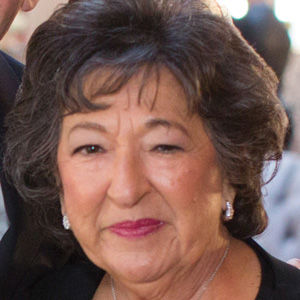Discover wonderful art, artifacts at campus museums
Published August 2, 2018
When thinking of going to a museum to view art masterpieces and other high quality visual works of art, one might think of the St. Louis Art Museum or even the Missouri History Museum.
We often forget the free and open to the public university museums of art. There are two or even three of these museums not to be missed.
The Mildred Lane Kemper Museum of Art on the campus of Washington University is first rate. Even better, you don’t have to be an alumnae or involved with the university to enjoy works by such greats as Rembrandt, Picasso, Gaugin, Matisse, Joseph Stella, Max Beckmann and Robert Motherwell — the list goes on.
According to Sabine Eckmann, director and chief curator of art at the Kemper Museum, it is one of the oldest collecting university museums in this country. It opened in 1881 as the St. Louis School and Museum of Fine Arts, part of Washington U. From the beginning, the museum has focused on acquiring the significant art of its time. The contributions of such leaders as Halsey C. Ives, who conceived of this teaching museum following the social ideals of John Ruskin and the British Arts and Crafts movement, are foregrounded. This also includes the German emigre art historian and Renaissance scholar H.W. Janson and his acquisitions of predominantly European modernism, establishing Wash U’s museum as a gallery of modern art; and the Renaissance specialist Frederick Hartt. During and after World War II, Hartt served with the Monument Men, rescuing looted and displaced art throughout Europe. He also was one of the first to acquire Abstract Expressionist art in St. Louis.
Carmon Colangelo, dean of the Sam Fox School of Design and Visual Arts says, “I am constantly reminded of how fortunate we are to have this remarkable resource. The collection supports a wide range of study in the humanities, social sciences and medicine across campus and beyond, particularly enriching the interdisciplinary study of art, architecture and design that is central to the mission of the school.”
And not to be neglected is SLUMA, the St. Louis University Museum of Art, headed by the vivacious Petruta Lipan. Completed in 1900, the four story Beaux Arts building originally served as the home of the St. Louis Club. For its first quarter century, the building was the center of St. Louis social life and was visited by a number of U.S. presidents including Cleveland, McKinley, Taft, T. Roosevelt, Wilson and Harding.
The building had a minor fire and the club sold it to St. Louis University, but it didn’t become the art museum until 2000. On the first floor there are two galleries, the Aronson and Community Galleries, for temporary exhibitions, and a classroom. The second floor features selections from the university’s permanent collection. The Collection of the Western Jesuit Missions is displayed on the third floor. The selections displayed on the fourth floor illustrate the artistic traditions particularly of Japan and China.
The historic Samuel Cupples House, is one of the rare examples of Richardsonian Romanesque architecture in St. Louis. It dates back to 1888 and houses the university’s collection, featuring a comprehensive collection of American and European glass. It also includes the Eleanor Turshin Glass Collection, which boasts the largest Steuben glass collection west of the Mississippi River.
There are other galleries of art at the university and there’s MOCRA. The Museum of Contemporary Religious Art, has its own director, Father Terrence Dempsey. And the university even has a sculpture park, the Lay Center, on 20 acres of land in Louisiana, Mo.
University of Missouri-St. Louis has the St. Louis Mercantile Library, which is really also a museum. It was founded in 1846 and has been housed at the university since 1986. Among the collections are the John W. Barringer III National Railroad Library, which includes 10,000 volumes, 600 feet of railroad documents and has become a major resource for the history of railroad business and technology as well as the study of how railroads have impacted American economy, society and culture. The Herman T. Pott National Inland Waterways Library, also found at the Mercantile, includes river artifacts and artwork as well as signed and complete first edition double elephant folio of John James Audubon’s, “Birds of America,” Harriet Hosmer’s marble sculpture, “Beatrice Cenci” (1857) and four portraits of Winnebago chiefs by Charles Deas.
One could spend endless amounts of time feasting on all the cultural experiences these university collections have to offer without spending a penny.
















